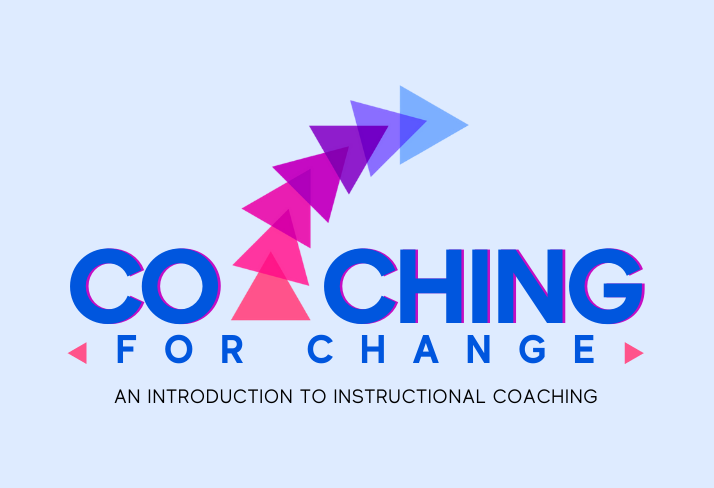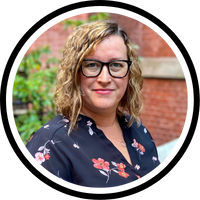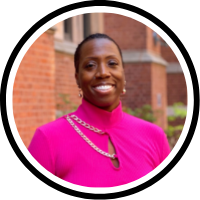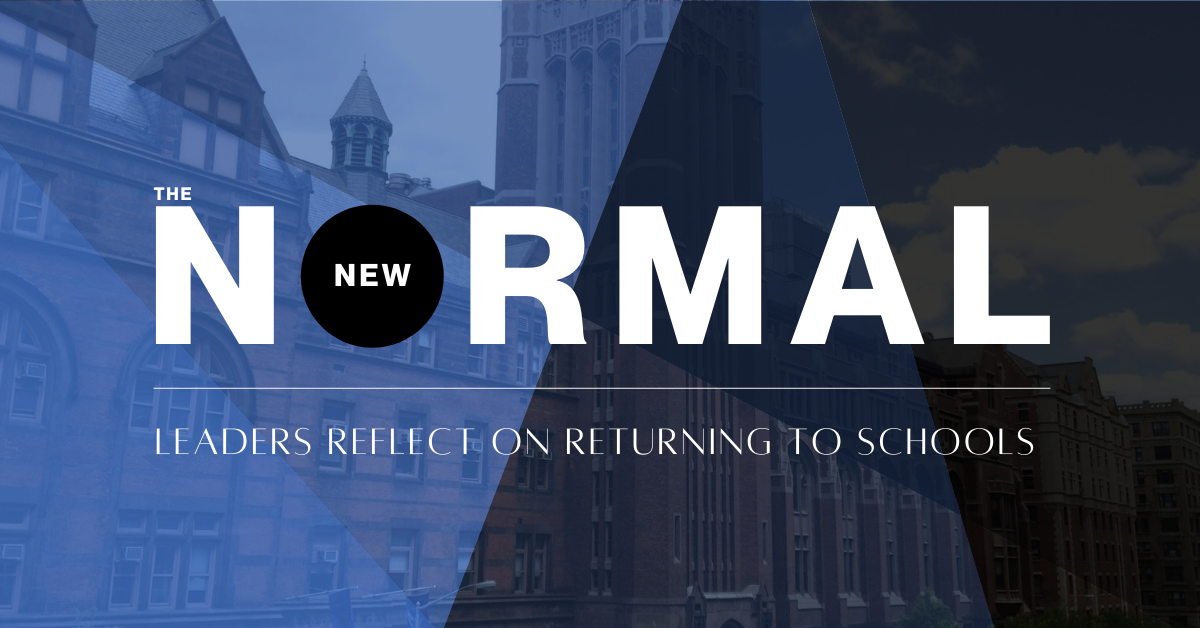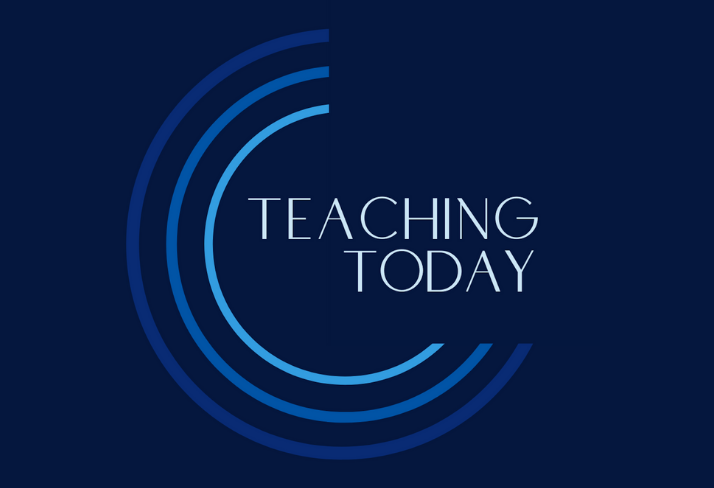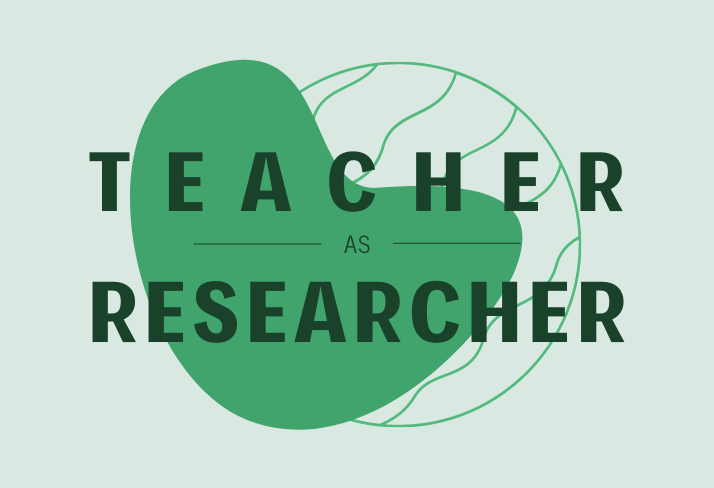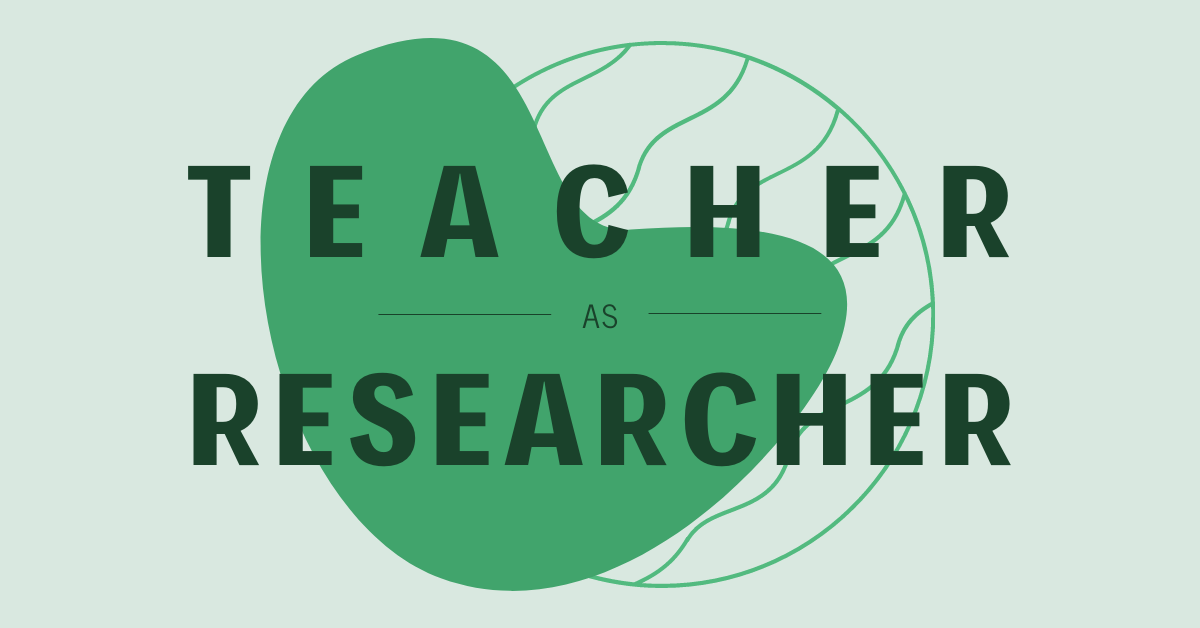|
Advice from the field on how to navigate the shift from teaching to coaching.
Teachers have always done much more than teach. They play a variety of roles, both in and outside of the classroom, and address needs or existing gaps in their school community. These roles may include mentoring other teachers, leading departments and grade levels, spearheading projects and initiatives, turnkeying professional learning, and serving as a dean or an assessment or technology coordinator.
It may seem like a natural move for strong teachers who are leaders in their own classrooms to step into a role as a leader in the larger context of their own schools; however, as with any transition, this shift comes with challenges. As teachers take on additional roles, the added work can create complications for both school administrators and teachers, especially in places where roles, responsibilities, and expectations are unclear.
Advice from teacher leaders
In my work with teachers, schools, and districts, I find it helpful to begin by asking questions that address common concerns surrounding this process: What are some challenges that arise as you step into a leadership role? What skills or tools do teachers need to possess in order to smoothly transition to the role of teacher leader? How can administrators best support their teachers as they shift their roles and responsibilities? To find answers to these questions, I turned to two wonderful educators with whom I work at a high school in the South Bronx — Leah Clark, an English teacher who has taken on the role of department lead and literacy coordinator, and is planning to move into school leadership; and Chris Mastrocola, who has moved from English teacher to teacher leader to Assistant Principal. They offered words of wisdom for teachers planning or hoping to move into a leadership role, and advice to administrators who are looking for ways to support teacher leaders in their community.
Becoming a role model
When I asked Leah about her recent experience of moving into her role as a high school department lead and literacy coordinator, she cautioned teachers to be mindful about which of their practices are successful in their classroom, but may not be recommended as a standard practice for the community. She notes, “When you take on a leadership role, you become more of a role model, and as a role model, certain practices that worked for you as a teacher may not be appropriate to share as a model to other teachers. What works for you may not work as well for everyone.” As an honest example, Leah notes that while her strategy of occasionally calling home during class — in front of other students — when a student didn’t show up for class or was late, may have had results, it could be seen as a questionable practice, and one that could even breach school or district rules. In hindsight, she wouldn’t recommend this to other teachers. In summary, Leah reflects: “The switch from being a classroom teacher to being a role model means that you have to think about what you recommend to other teachers and maybe even adjust your practices. As a teacher leader, other teachers look to you as a representation of the school’s policies and administration in a new way.” Chris Mastrocola, who moved from high school teacher to department leader, also echoes Leah’s reflection that teacher leaders need to recognize that everything they do or say is a model for others.
Communication counts
Leah admits that as she has moved into her new leadership role, she has had to become more conscious of how she talks about other people. She advises aspiring teacher leaders to “choose your words a little bit more carefully and be aware that your words and actions represent what you would like the staff environment to be. Sometimes you can’t say the things that you actually might want to say!” Chris also emphasizes that “everything you do or say as a teacher leader or school administrator can serve to help draw teachers and staff in to support the community, or alienate them — push them away from feeling like a productive member of the school community.” The importance of clear and thoughtful communication also extends to what teacher leaders need to receive from administrators, in order to feel supported and successful in their role. At their school, Leah and Chris both attest to the importance of the support of their administrators, noting that their principal, Santiago Taveras, consistently offers constructive feedback and opportunities for them to talk through challenges, finding both regular and impromptu times to meet to check in about how their work is going.
Shifting from teaching to coaching
In his assistant principalship role, Chris has taken on the role of instructional lead. While this is a natural evolution for anyone like Chris, who is an outstanding classroom teacher and curriculum planner, he quickly realized that working with adults — teachers — is different from working with students, and this shift demands new skills and perspectives. According to Chris, “As a teacher, with your students, you often feel it is your job to intervene in everything, but as a leader, you need to be thoughtful about not undermining teachers’ autonomy. Teacher leaders, like school administrators, need to strive to be patient and take the long view of change and development. You can fix and change systems, but not teachers. Development and growth takes time.” To me, Chris’s advice is crucial. We would love for all our teachers to be expert practitioners, able to step into the classroom and seamlessly juggle all the complications of teaching. However, like our students, and like any professionals, teachers are each learning and developing their practice at their own pace. It takes time. Chris highlights the importance of having a growth mindset and cultivating teachers’ strengths, as opposed to working from an evaluative, deficit perspective. He notes that when working with teachers, leaders can “help them identify their strengths and how to leverage them inside and outside the classroom — find out where you can support them to shine. Work alongside teachers to help them articulate their areas for growth — helping teachers to articulate in one sentence about just one specific area for growth is helpful to leverage change.”
Establishing trust and agency
Leah appreciates that at her school, teachers are recognized for the qualities and skills that they add to the school community, and are trusted with the opportunity for leadership. “Being a leader in your own classroom is the best place to start. Even if you don’t have a title, by leading well in your own classroom, you can spread positive classroom practices and classroom culture to your community.” Based on his experience, Chris suggests that as teachers move from classroom leaders to school community leaders, they can continue to contribute to a positive environment by adjusting their expectations — not only for themselves, but for their colleagues. He shares that when making the shift into leadership, it’s important not to come down too hard on yourself nor expect too much, and instead meet teachers where they are. Leah notes that trust is also a part of the equation, at all levels: “Be trusting of your colleagues and your community. You don’t need to micromanage departments or each teacher at your school to get the kind of impact and transformation of your school that you want. Trust goes a long way toward building agency and confidence for teachers and teacher leaders.” Chris’s final words about stepping into any kind of school leadership role feel important to hold onto: “You need to be kind to yourself in order to be patient and kind to the teachers in your community.”
Are you taking on the role of teacher leader, and wondering how you can bridge the gap between coaching and teaching? Check out Coaching for Change, which will support you in cultivating the strengths of teachers in your community, increasing your effectiveness as a team leader, and establishing confident, compassionate coaching practices.
6/6/2022 Creating Transformational Change: Structures for Designing a Professional Development Series
A suggested sequence of sessions that encourages learning, application, reflection, and the sharing of promising practices.
Effective professional development can be defined as structured professional learning that results in changes in teacher practice and improvements in student learning. Features such as strong content focus, inquiry-oriented learning approaches, collaborative participation, and coherence with school curricula and policies can be the difference between good and great professional learning experiences.
Since the 1970s, there has been a growing body of literature about learning and the application of reflective practice, which is a way of allowing educators to step back from their professional experience, develop critical thinking skills, and improve future performance. When educators can learn a new idea or concept, apply this learning to their specific context/content area, reflect on the experience and share their experiences with colleagues — a cycle we call LARS — they can bring their professional learning experience to fruition.
Using the LARS model
The LARS model is a structure for developing ongoing professional development sessions that prioritize developing community knowledge, shared practices, and deepening reflection on what works, and why. In the planning process, facilitators should conduct a needs assessment to determine the strengths and struggles across the community and strategize an area of focus. For example, one school recently discovered student performance in reading was struggling. After conducting a series of Learning Walks, the school leadership team noticed that literacy instruction was inconsistent across classrooms. The leadership debriefed their experiences and came to the conclusion that if teachers were using similar instructional strategies for Before, During and After reading, students would have increased their comprehension and confidence. The leadership team reviewed several research-based strategies and identified two strategies for each stage of the reading process, for a total of six literacy strategies to share with the whole school. They began to use the LARS framework to structure a 12-week PD series. They knew that they needed two weeks per topic: one session to introduce the strategy and make a plan to implement it, and a second session to reflect on their implementation and make adjustments.
Learning
The first session in the LARS model is focused on learning a new strategy, and making a plan to integrate or apply that strategy into instruction. This workshop should communicate the essential components of the topic, provide active engagement and an exchange of ideas between participants. In leading the first workshop on literacy strategies using the example above, the facilitators would share more about why literacy is important across content areas, as well as the concept of Before, During and After reading strategies. They’d then provide a hands-on experience with the first literacy strategy. They may choose to model the strategy using a professional text, show a video of a teacher using the strategy in a real classroom, or create a challenge for teachers to collaborate on developing a model after learning about the strategy from a shared text.
Application
At the end of the workshop, teachers consider how they can implement what they’ve learned into their practice. This is the apply portion of the session. Participants can complete an application plan where they write ideas about how they can implement the strategy, and what artifacts they will be able to bring to the next session. When teachers choose for themselves what to implement and what they want to bring back to the group, they have increased ownership in the process. By asking all participants to bring an artifact to represent what they implemented, we are able to create reciprocal accountability within the community. Additionally, when teachers across the school begin using a shared strategy at the same time, it exponentially increases the students’ understanding of how to use that strategy, and kickstarts the impact of that strategy on their learning experiences.
Reflection and sharing
The second session has a focus of reflection and community sharing. In Session 2, participants regroup through written reflection using either open-ended journaling practices, or by responding to a variety of prompts specific to the focus strategy. By reflecting on their experiences of implementing the strategy, teachers are able to synthesize the impact of that strategy on student learning and their own teaching practices. Their reflections become concrete texts and when shared, culminate as an archive of the professional learning that has occurred. After reflection, participants share their artifacts and experiences together in small groups, identifying similarities and differences in the samples of student work and their implementation experiences. Participants may celebrate successes, as well as take the opportunity to identify challenges and ways that their process can be extended. After the first two sessions, the school may choose to retry the focus strategy, or to move onto the next topic, with the expectation that teachers will be adding to their instructional tool kit with each new move they learn.
Using the LARS cycle supports the most challenging aspect of professional learning: application.
Without application, learning just floats in the air as a neat idea. Engaging in the LARS process as a school community and/or department builds in time to apply new skills and reflect on them with colleagues. The reflection aspect promotes individual thinking about what went well, and how individual teachers might tweak it to make more sense for their classroom. This can become a rigorous process where teachers in the community test and vet instructional strategies that are most effective for their unique students. The LARS model is a cycle of inquiry that lends itself to not just learning a new concept, but creates a structure that helps communities cultivate ways of working, learning and growing together to meeting the evolving needs of students.
Educators weigh in on how they prefer to receive feedback and where they struggle when offering it to others.
When I started my leadership journey, I was confident that with the right effort and the right systems and structures, the team I was leading would simply be successful. I imagined that I would avoid confrontation through planning, modeling, and being nice. We’d never have any problems!
But we can’t lead a team this way. Each individual needs feedback to increase self-awareness, identify goals, and strategize a path forward. They deserve actionable feedback that supports their work, and it needs to be direct, clear, and kind. Whether you’re the person receiving feedback or providing it to others, you bring your entire self to the conversation, which means there is no one-size-fits-all approach. We recently spoke with a group of educators who were kind enough to share how they would like to receive feedback, as well as some of their most pressing concerns when it comes to offering feedback to others.
How do you want to receive feedback?
Jeff, Costa Rica
I think the most important thing is that feedback is driven by compassion, and even love and care for me. This is not a time for scolding or trying to make someone feel less than, but a chance to build someone up by helping them be successful. Avyanna, Bronx I like when people are direct and actionable. If they notice something can be improved about my practice, then I like to hear what can be improved and a suggestion of how to approach it, or at least the willingness to brainstorm solutions with me. Brian, Queens I would like to receive feedback that is clear and has strategies I can try, in order to meet the desired target. Laura, Queens Feedback that is easy to understand and not too overwhelming. Becca, Pennsylvania When I receive feedback, I want to hear specific suggestions. I want those to be couched in supportive terms; I want to feel like the person giving me feedback is on my team, working with me to try to improve my practice, rather than "grading" my practice. Katherine, Singapore I want direct and honest feedback myself, but struggle with consistently offering that to others, instead allowing a fear of damaging the relationship or contributing to hurt feelings get in my way. G, Queens I like to receive clear, kind feedback. It doesn’t need to be “nice” but I bristle if it’s unkind. Rasha, Brooklyn I’d like to receive constructive feedback that focuses on promoting the quality of my work and addresses both strengths and weaknesses, or the sandwich of “glows” and “grows”. Although some people are not in favor of the sandwich feedback, I still prefer to hear some positivity before pinpointing the flaws. Shannon, New York I like being invited into the conversation, and being asked what I think went well, what part of the lesson I felt could have been stronger, or where were I was hoping for a different outcome. These types of questions open up to a conversation rather than just finding areas to critique without context. Matthew, Queens I would like to receive feedback that is clear, actionable, and includes the full truth. It lets me know where I stand and how I’ve been progressing. Ysladia, Queens I like honesty and direct feedback that will help me improve.
Addressing the challenges of giving feedback
What do you do when, regardless of how you give feedback, the other person takes it personal? I have a couple of teachers that have had different people try different approaches to offering feedback, and yet they still get defensive and take it as a personal slight. How do you get past these walls?
What is the balance between questioning and providing direct feedback?
As someone who partakes in teacher evaluations, I often wonder about positionality. I tend to position myself as a teammate working to help colleagues improve their practice, but how genuine does that feel if I am also writing up an observation as part of someone’s professional evaluation? My struggle lately, I think, is how to separate feedback from "grades".
When we want people to take action, we need to be strategic about how and when we offer feedback — more is not always more.
Even when we’re not in a position of power, our words carry a lot of weight — and it’s worth examining how we can communicate feedback to others with authenticity and clarity, and in a way that allows them to receive our words.
A look at how schools are managing competing priorities while re-acclimating to in-person instruction.
Throughout the New Normal series on our Teaching Today podcast, we’ve been taking a look at the instructional interruptions and innovations that have surfaced over the past two years as a result of the pandemic. As schools continue to re-acclimate to in-person teaching and learning, our panel of school leaders returns to discuss the opportunities and challenges they’re witnessing in their communities.
Let’s “listen” in on the conversation between:
Roberta: It feels like we are coming full circle with our New Normal series. And now that school is back in session, I wonder, what does “normal” mean, and will it ever return? How are things with you since we last had you on?
Candace: Returning definitely came with a lot of anxiety which hasn’t actually gone away, but I think that every stakeholder involved in the life of a student saw the need to return to school, and the kids more so than anyone else. They have been here. I’m seeing attendance at 93% every day! We’ve seen the emotional journey as we make sure we satisfy the needs of everyone who needs so much attention but also make sure that we are working in tandem — always focusing on the academic needs and not using that as a crutch or a reason why we're not focusing on instruction. Ryan: Candace, it’s great to hear about what you're doing and the challenges there. I was a principal in a Benton Harbor area school, and I have recently left that role. Now I'm working at a Silicon Valley consultancy, and I’m working remotely out of Chicago. I'm in charge of professional learning opportunities, so I can certainly speak to what it's like not being a principal, but I can also talk about what I see going on in schools both as a parent and because I’m still working in schools as a collaborator.
Assessing the damage
Roberta: We’ve experienced that cycle of openings and closures along with logistical challenges, but now that we’re settling in, there is a renewed focus on instruction. What are some of the early experiences in terms of atrophy, or what some are referring to as a learning gap, that may have happened in the learning over the last couple of years?
Candace: I think staff members, students, and parents feel a renewed sense of life and appreciation. It has become a central focal point — the reintroduction into school. We’ve had logistical challenges like losing staff members who resigned, moved, or found remote jobs alongside the reality of vaccine mandates. Even with bountiful stimulus money, it doesn’t replace good people. Five years ago, we would have said this is ridiculous, but today we have to actually make meaning, create a path forward, and make goals come to fruition. So, it has been an interesting kind of tension for me personally, as a principal because, while I care deeply about my students I have to focus on these challenges — all of these different variables. Even when I can think of excuses to let up, I’m not going to give any. Every day is valuable, so you have to always keep a straight face and hold on to the mission and vision. Ryan: I think we saw the same thing in Benton Harbor. Staffing was the biggest challenge and it’s very hard to climb up the hierarchy of learning when you don’t have enough bodies. Even prior to COVID, we had situations when multiple teachers would be out, and our PE teacher would have 90 kids in the gym. In my home district here in the Chicago suburbs, we just had a parent teacher conference last night. The first thing you see when you walk in is like a job fair. It’s a huge 25,000 child district, and it’s like we’re going to speed interview. We had to cancel a couple of days of school because we didn’t have enough bus drivers. I was very proud that we were able to offer a kind of hybrid experience, because at the end of the day, kids had about half the time in school, and half is better than none. When I talk to the teachers here locally, they are much more concerned about the social-emotional issues with the little kids. For example, for the kid that missed kindergarten and then went into first grade and maybe didn't have preschool doesn't know how to do school yet. So this is a big deal, especially for the younger children because they just don't know how to function in this environment. They're used to pressing mute, not being in a physical classroom, engaging with humans. I wouldn't even say it's a learning loss. It’s more like you've been raised by a computer for a year, instead of people. Of course, I’m being facetious but how do we do group work in this landscape? I think we forget how intense that social learning is in those first three years, especially. Roberta: I want to build on that because I think that one of the things that we're really seeing across city schools is a focus on social-emotional learning, and I don't know that it's just at the elementary level. I think that we're really seeing it manifesting in pretty big ways in middle schools and high schools as well. Teachers are also experiencing challenges around their own social-emotional health as we're all kind of coming out of the pandemic and beginning to assess the damage both internally and externally. Ryan: It’s funny you mentioned this, because in local districts in the Chicago suburbs, the report was that teachers “stormed” a board meeting about work conditions. Now, maybe the report was a bit overcooked, but at the end of the day teaching really is a 24/7 job, even if you're phoning it in. There’s no such thing as an easy day of teaching, and then to juggle all the COVID protocols — then, to communicate all these things with the central office when there aren't robust systems in place to make that frictionless. I think that working conditions for educators in general are a concern for teachers and their mental health. Candace, you just alluded to that when you said you've got to have a game face, so your teachers can keep their seatbelt on. Sherrish: Yes. What's really happening is that it's different for everybody, so everyone is dealing with some form of a different kind of socialization, some emotionalism around this whole pandemic and returning to school. It looks different if you're in high school, it looks different if you’re in middle school, and from the perspective of a parent or a teacher. Whatever the case, it exists. We're all going through this.
Re-acclimating to the physical classroom
Roberta: One of the conversations I've been having is thinking about teachers who are new to the field within the last couple of years. The reality is, if your first- and second-year teacher are teaching in a primarily remote or in a hybrid situation, there are a lot of brand new things that you're experiencing that you have never had to do before. You’ve never had to pass out papers, figure out how to negotiate the bathroom pass — you’ve never really had to deal with interruptions in your lesson, because you could absolutely put your whole class on mute and finish talking. You can't do that in real life, and that's one of the challenges that a lot of educators are facing right now.
Ryan: I want to jump in and talk about class size. We saw that was one thing people appreciated during the pandemic — small class size. Now that we’re back in person, we have challenges like: in my daughter’s class, five kids just kind of vanished — we know one decided to be homeschooled — and that was enough for the school to cut one fifth grade teacher, so then all of the sudden the class size is even larger than before the pandemic. I’m also thinking about the hopes we have that people are getting vaccinated to scale, but what if that doesn’t happen? Are we going to see a dramatic uptick in COVID and then more disruptive shutdowns? What are you thinking, Candace? Candace: I can't even allow myself to think in that way. With what we’ve been through last year — we're open today, we're closed the next — to me, no matter what happens, just have a plan. I think your city has to have a plan to handle testing, so it might take a lot to close your city, if at all. I’m not really worried about it, because I can't get caught up in what happens. We have to be prepared for it, and have a mentality that we can handle it. With what we lived through, I have that mindset. What I’m focusing on is dealing with teachers that have been around and want to go back to some very traditional teaching, like handing out worksheets or thinking that students need to sit and listen to me teach, watch me write, especially now, when kids have not sat for a long time. Then we have the brand new Gen Z teachers who haven't done anything like this yet. So, I’m just going to say that when you’re a teacher you can’t really prioritize mental health by asking for mental health days in September, which is what I’m seeing here. It’s just a very different way of thinking. Ryan: This is an interesting statement, though. There’s this paradox. We all know the funny stories about kids gaming while they were on Zoom, but from a teacher’s point of view, they could do very linear teaching and we know great teaching is only linear in the sense that you’re building towards something — hopefully a cool assessment. But rarely does direct instruction get you through more than 10 solid minutes, so I think people got used to this sort of luxurious way of not having to think as hard about pedagogy.
Fostering connections
Roberta: I don't know how you're doing things, Candace, but I think a lot of schools are dealing with that hard question: to what extent do we go back to paper handouts and textbooks in the classroom, and to what extent do we continue in the more digital and virtual world? Schools I'm working with have worked very hard to make sure that they can have a one-to-one laptop ratio or Chromebooks within the school building so that kids can potentially have a device at home and also have a device at school. They have eliminated paper and handouts in favor of continuing on with some of those virtual practices.
This brings up the question around hybrid work. Today, we had a staff meeting with 15 people in person and five online. How do we do group work in this situation? It’s easy to fall back on the very traditional, “I’m going to talk for a while and you should sit quietly and answer some questions.” Working individually and independently on my laptop in class perpetuates that traditional model, even though you're working in technology which many people assume is very 21st century. Candace: Yes. Exactly. We started to discuss this at the end of last year. Our building is very traditional in the sense that it's old, so we literally have power outages every single day. I have generators that I bought from Amazon that we have in order to charge a smart board so it stays on when the power goes out. At this point, the kids aren't even phased. It’s more like, “Oh, the power’s out again.” We had a discussion at the start of the year about what to prioritize — how to get and keep students talking, especially as many get used to acclimating themselves in a classroom, simply being around one another. We had to talk about how much technology to keep using, trying to move from online to in person, and how to move from being in front of the smart board to moving around the classroom during class. We actually had our interim superintendent ask why attendance was so high, and I think it's because students weren’t able to have a genuine connection without us, fostering conversation and connecting with each student. This led to kids really wanting to come to school. Ryan: That's interesting because if you've read Matthew Lieberman, a professor of psychology at UCLA, and the Ted talk is out there too, he basically proposes that Maslow's hierarchy of needs — food, shelter, all the way to your self-actualization is incorrect. He says, the first you know when a baby is born, the first thing they do, why they cry, is because they're trying to make a social connection because they're not going to get food and shelter unless they can make that connection with mom or dad. Any school that can capitalize on that basic psychology of humans first is going to have spectacular outcomes like you’re having. It also brings in questions of digital technology, and what happens when we have incredibly shallow meaningless connections. It’s a skill, because you may be connected, but you have to determine if it’s a meaningful connection. Those are big questions as a society we’re addressing now. It’s exciting to hear that getting off the devices was making them tune into each other as human beings and engaging in different ways. At the end of the day, there's real power in saying we're going to do more with less. We’re going to focus on what matters, which is people and relationships — making curricula social is a very powerful thing. This is why we knew intuitively, and we've now found through research, if you have kids going out and doing stuff in the world they'll engage differently than how they engage with just the dreaded worksheets all the time.
Managing observations
Roberta: One of the things that happens around this time of year for many schools is the influx of observation. We’ve established our classrooms, our student programming, getting everyone in their classes and getting their schedules correct, and now is the time for a teacher evaluation. But we're still in a time of a lot of stress and pressure, and it feels like we're still changing. We’ve got teacher shortage issues, and maybe don't have enough bodies in the building — how are you managing that as a school leader in terms of getting back into an observation cycle? What are some of the things that you're concerned about?
Candace: Well, even with the mandate for observations, we never viewed them from a punitive standpoint, so it doesn't feel as painful. It's really about feedback and a conversation. I’ve done a first round that was focused on a non-invasive process, especially for the teachers who needed an introduction to the process. We want our teachers to invite us to two lessons they think will go well, so they feel more comfortable from the start. We look at the Danielson rubric as a tool instead of something punitive, and we invite people to refresh the content for themselves in hopes that it can actually improve the quality instruction for students. It’s about how you show up for kids. Ryan: In Michigan, when we had the first pandemic spring, it was like, “Yeah evaluations: don't worry about it,” and then it went immediately back to normal. We found ways to make it less painful. Like Candace mentioned, teachers invite us in, so it’s less stressful for them — we’ll do anything we can do to mitigate the anxiety this causes because, no matter how you frame it, teachers are concerned because it's their life, their livelihood. Roberta: Yes, and there's only so much that a principal has control over in this situation. The evaluation criteria is actually set by the state, in terms of what percentage of their rating is based on observations and what percentage is based on student performance on state tests. Candace: Yeah, I think because of the pandemic, many educators were hoping that the powers that be will actually see that there should be a different way we evaluate students — in a more holistic way. Roberta: Thinking of operations and feedback, there is an art to actionable feedback, an essential intervention that helps cultivate a culture of shared values, but teachers and leaders often struggle to find the balance between positive, critical, and sometimes destructive feedback.
Promising pandemic practices
Sherrish: Yes, that conversation about actionable feedback is so valuable. We’ve had a lot of realizations today during our conversation, and I think many of us had ideas about what it would be like to return to school, and some of those things turned out to be true and some were not so true.
What is something that you're seeing this year, possibly as a result of the pandemic, that is exciting you for the future of education? Ryan: One of the most incredible things for me was witnessing elementary teachers who didn’t find technology to be their jam. You're supposed to be tactile and you're supposed to have scissors and construction paper. It's not about clicking, but within a month, my teachers — although they were not a very tech savvy bunch — were Google Suite pros and it was very exciting to see that kind of growth around technology happen at a quantum pace. We know that some people are saying you can use this or that software for all of your courses — my question is where are there good ways to use Ed Tech, where are there ways to rethink the classroom schedule, ways we can start doing more dynamic assessments? It’s more like everybody wanted to return back to normal so bad, right, it’s like, let’s go back to the way it was, and I think there is still an opening here to rethink Ed Tech. We’ve got a long way to go, but it might open up more possibilities. Roberta: I hear the concern that you're implying Ryan, which is yes, we want to go back to normal, but not back to the 70s, not back to the 80s in terms of pedagogy in the classroom, and we need to be thinking — how do we take the best of what we learned and the skills that we learned, and really continue to refine them how and work through, “How do you teach today for tomorrow?” Ryan: Yes, and the other interesting insight I have to add is that I've been working with a lot of companies in Silicon Valley, so whether they’re tech firms or firms working on their tech part of the business, the amount of thought and creativity that goes into things we take for granted is just as impressive as you would think. We don't see that kind of capital, both intellectual and monetary, being directed into Ed Tech. Candace: I agree. That said, as a leader trying to figure out how to do that within the box of our constraints, it is a challenge. This could have been a time to reconstruct school schedules, and not because we need to reduce class, but because this could be a different way for students to receive instruction that could have met their needs. There were so many different ways to construct things to meet all kinds of needs, and it felt kind of like we threw everybody back in and literally crossed our fingers and hoped for the best. I am hopeful that somehow, someone does see some innovation, and through the conversation among teachers, they can see the power and kind of the work that they do in classrooms. There are sparks. People are collaborating and pushing. I think when teachers got over their fear of technology, they could move forward and now they can continue to push into new ways of working. Ryan: That’s the central thing — can we put some of the good things we learned in the pandemic in a bottle and start spreading them out in other ways? We know school systems haven't changed in 150 years, really. Now we have a lot of proof of concept that people can do stuff they thought they could never do. You can always use this whole pandemic time as a case study. We published two books during the pandemic, Benton Harbor with CPET. Nobody prior to the pandemic would have thought about doing that. Roberta: Teacher shortages, learning losses, social stressors, anxieties about returning to in person school — it has been a bit of a bumpy ride, but our school leaders see the possibilities of what's to come with hardcore dedication to their team and a deep commitment to their students who are setting a clear agenda for forward momentum, no matter what. Ryan: [silence] Roberta: Ryan, you’re on mute. Ryan: That is the funniest post-pandemic thing — like everybody's been on Zoom for almost two years, and at least once a week, “You're on mute.” [Laughter] Roberta: And then that pause of looking for it — where is it again? It's in the same place as last time, on every call. [Laughter]
Your voice matters! Send us your education questions, concerns, and promising practices and we'll address them. Subscribe to Teaching Today and chat with us on social media, at @tccpet.
One district's success with teacher-led passion projects.
COURTNEY BROWN
Senior Professional Development Advisor
When teachers are given space to imagine possibilities for their schools and students, time to refine their ideas, and the support necessary to implement new projects, what can they achieve?
Since 2017, we’ve been tackling this question through our collaboration with the North Plainfield, NJ district. In response to a statewide initiative to develop teacher leaders, the district leaders at North Plainfield tapped us to support this development process alongside the implementation of teacher-led passion projects across the district. These passion projects allowed teachers to identify and respond to district-wide issues, while gaining experience in initiating and executing district-wide improvements. To meet this complex goal, we designed our professional development as an inquiry cycle for teachers based on their interests and passions, while simultaneously studying adult learning theory. Using this model, participating teachers developed an action plan for implementing a passion project alongside an exploration of what it means to lead other adults through the role of a teacher leader. When designing projects with these types of goals, it’s important to focus on the foundational elements of adult learning theory, providing purposeful, practical, and empowering experiences that are directly related to teachers’ roles and responsibilities. Through meaningful experiences and discussions, we can provide opportunities to learn facilitation skills, explore action planning, and implement an extended inquiry process. Equally important in the design phase is the alignment with New Jersey State Standards and district-level goals. With this in mind, we can customize our professional development as needs evolve from year to year and project to project. The key is to focus on creating safe spaces for teacher leaders as they explore, practice, and reflect on their experiences.
How do you build teacher leaders?
As we begin working with teacher leaders, we make a commitment to read and share the unique elements of adult learning theory. Through training and experience, teacher leaders are well-equipped to plan and present instruction to children, but working with adults is different, and even the best teachers benefit from deepening their understanding of adult learning theory. With North Plainfield, we encouraged teachers to explore their own learning and leadership styles, and dedicated time for teachers to reflect on situations when they were nurtured by a leader, and what moves those leaders made to create a positive and productive environment. Alongside articles such as Pillars for Adult Learning, we asked teachers to identify their own learning styles within Ellie Drago Severson’s framework of ways of knowing, using a Four Corners protocol. Giving teachers time to explore who they are as leaders, teachers, and all of the identities they bring to their school allowed them to reimagine themselves as learners. We can (and should!) be both leaders and learners at the same time! In addition to exposing teacher leaders to adult learning theories, we infused literacy practices into our workshops so teachers could use them in their own classrooms. As we read excerpts from Malcolm Knowles’ articles on adult learning, and utilized a text rendering protocol as a model, we demonstrated how to pull key ideas from a text in a concise and collaborative way. Most importantly, we want our teacher leaders to understand that unlike teaching children, “Adults...tend to have a perspective of immediacy of application toward most of their learning. They engage in learning largely in response to pressures they feel from their current life situation” (Knowles). Using this concept as a guide, we recommend that teachers reflect on their own perceptions of positive leadership, as well as how they can directly apply these tangible qualities to their own work.
Starting and supporting a passion project
In his book Drive, Daniel Pink describes how motivation is developed through the combination of autonomy, opportunities for mastery, and a driving purpose. With our North Plainfield team — after establishing that as adult learners we all learn and process our learning in different capacities — it seemed only natural that we create space for teacher leaders to consider the issues they were passionate about and ways they might use their passions to enrich their school community. For their passion projects to be successful, we needed three critical components: Community of practice Before starting any training for teacher leaders — especially across a district, with teachers who may not usually work together — it is crucial to develop a safe space where participants feel supported and heard. Participants need to be willing to take risks, and also pilot, revise, and push restart on their plans. To help develop a community of practice, we used reflection and sharing strategies such as our Success and Dilemma protocol and A Picture Tells the Story. Administrator involvement We worked closely with North Plainfield’s administrators, who helped teachers with logistical questions and concerns throughout the year. The district is spread out across several schools, and when a group of teacher leaders was planning on implementing a committee to oversee functions and events that would create school spirit, the administrators were able to suggest teachers from other schools who might also be interested in joining this committee. As a result, district-wide events such as a reinvigorated pep rally and an evening fitness event for parents and students were created. This concept can be replicated in any school district where the administrators are a part of the professional learning. As outsiders to the school, we do not have the privilege to know all of the teachers in a district; this is where having engaged and supportive administration is crucial for bridging the gap between professional learning and teachers, particularly when the professional learning is designed to highlight teachers’ passions. Actionable goals Allow teachers time and space to brainstorm their passion projects, and use meeting time to plan them with actionable goals in mind. Dr. Roberta Lenger Kang's Strategic Planning for School Change article guided this idea as we worked to incorporate modified design thinking components for small groups into our time with North Plainfield, and as teachers developed individual and collaborative action plans. Approaching this process by first testing a plan and then piloting, tinkering, and iterating is a cycle that can be replicated by any school district — provided that everyone involved feels safe to take risks and fail forward.
What changes are being made in communities?
Teacher leaders are implementing so many wonderful passion projects in North Plainfield. Their projects are rooted in their passions, and their passions stemmed from improvements they wanted to make in their school community. In challenging areas, teachers saw new opportunities. Here are just a few examples:
Capitalizing on the passions of educators can spark change within a school community, and can empower teachers to take on new leadership opportunities. Allowing teachers space to dream, and investing in their learning creates a powerful pathway for authentic, teacher-driven change within a school district. When teachers are empowered to take on new roles and address real concerns, the possibilities for positive change are limitless.
Letting go is one of the hardest parts of effective leadership — how can you set your team up for success?
We might think that the hardest part about becoming a leader is knowing the right thing to do, at the right time, and then doing it. In reality, the hardest part of becoming a leader is knowing the right thing to do at the right time, and then not doing it. Let me explain.
Leaders often find themselves in a position to manage others in an area where they’ve previously been successful. The problem is, when it comes to supervising others in doing a job we know how to do well, it’s often easier to continue to do the job ourselves than to watch others struggle through it. Face it — if we do it ourselves, it’ll get done faster, better, and everyone will see how skilled we are and they’ll learn in the process. Except...not really. In reality, it’s vice versa.
Letting go is one of the hardest parts of effective leadership
When we’re doing our jobs well, our work as leaders is to coach and supervise the tasks and responsibilities of others — and that role should take more of our time than anything else. If we’re spending the bulk of our time doing the tasks ourselves, we aren’t leading, we’re doing. The true task of a leader — as a teacher, an administrator, or even a superintendent — is to lead from the ground up, nurturing those around us to take root, grow tall, and bloom. But this process is easier said than done. In reality, even when we establish a process for delegating tasks, distributing roles, and differentiating responsibilities, it’s easy to spend all day, every day putting out fires, stopping fights, and feeling frustrated. This is because in ground-up leadership, we have to train and coach others to know how to do the right thing at the right time, even when we aren’t around. This is when leadership feels like a vice, when the weight of our leadership role feels like it has such a tight grip on us that it makes it hard to move or even breathe. When we feel the vice, we need the VERSA. VERSA is a process for leadership that includes five principles of leadership that will help us to transform our teams from the ground up, allowing us to step back while others step forward.
V is for Vision
Effective leaders set a clear vision to help their teams see what matters most. The first step for working with any team is to set a clear vision for the work they’re doing. It’s our responsibility as leaders to find the big picture vision for the task at hand, and help each person on our team to take on that vision as their own. This means they need to see value in the vision, see the role they play in reaching toward the vision, and see the vision as it fits into their own purpose in the work. To set a vision, leaders must ask themselves: What is our goal? We must remember where we want to go.
E is for Expectations
Effective leaders clearly communicate their vision and establish shared, explicit expectations — even when they seem like common sense. All conflicts are the result of missed expectations, whether known or unknown. We all have expectations of ourselves and of one another — when those expectations are not clearly defined, are not stated explicitly, or are not agreed to, we’re bound to have accidental missed expectations. We’re also bound to have purposeful missed expectations, where someone wants to leave early or doesn’t meet a deadline. Without clearly stated and agreed to expectations, it can be challenging to realistically hold people accountable for their mistakes. To establish expectations, leaders must ask: Do we agree on what needs to be done? We must remember to say what we want to see.
R is for Responsibility
Effective leaders identify who, what, when, where, and why. If it’s everyone’s job, it’s no one’s job. The idea of shared tasks and shared responsibility is great on paper, but in the real world, when the components of the task are ambiguous or the process is mysterious, we often create more problems than we solve. Responsibility entails the strategic and purposeful passing of the baton from one person to the next, for a defined period of time. We can think about it like a relay race. If everyone runs all at once, the team is doomed to fail. If no one runs a particular leg, everyone loses. Most work in teams requires thoughtful distribution of tasks, even if they can be completed by multiple people on the team. To establish responsibility, leaders must ask: Who will do what, and by when? We must remember to monitor the baton pass between team members on our project.
S is for Support (and praise)
Effective leaders provide opportunities for professional growth and strategically match people with tasks linked to their gifts and talents as often as possible. They praise with purpose. In her book Dare to Lead, Brene Brown challenges leaders to imagine that each of their team members is actually doing the best they can, without reservation. The question she leaves us with is, if that’s true (which she is very confident that it is) what does it mean about how we support them in the work? How do we determine that our team has all the skills they need to meet the demands of the task? How can we anticipate their professional learning needs, as well as create a culture where people feel comfortable coming to the front to say where they need help? If we are truly motivated by our goal, we’ll take the time and put in the effort to provide support and praise to our team members, offering feedback on what has been done well and where growth is required to meet the goal. To provide support, leaders must ask themselves: Do we have the skills to meet the expectations? We must remember that common sense isn’t always common, it’s often learned through culture and prior knowledge.
A is for Accountability
Effective leaders follow up on met and unmet expectations. In direct conversations, we can identify the obstacles to meeting expectations, collaborate on action plans for next steps, and when necessary, establish proportional consequences. Part of the challenge is that many leaders grew up in the light of the epic quote, “if you build it, they will come.” I know that I spent a lot of time believing that if I just set a clear vision, hired the right people, and created clear structures, I wouldn’t ever have to have those hard conversations, or correct someone on the team, and of course, I’d never need to fire anyone. But accountability is just as important as every other part of the process. It’s what raises the stakes, creates a fair working environment, and reinforces the values of the organization. Without accountability, anything goes...and when anything goes, everything goes. To hold our team members accountable for their contributions, we ask: What feedback or action steps will translate into met-expectations? We can remember that accountability doesn’t equal punishment, but it is a call to account — to explain what happened, why it happened, and how we can make a change in the future.
VERSA is a process for leadership that allows us to lead from the ground up — stepping back in order to move forward — and authentically move our teams towards knowing the right thing to do at the right time.
When our teams take center stage in these ways, it’s a huge win. It means as leaders, we can begin to set our sights on the future, knowing that day-to-day, our team is leading the way.
If nothing changes, nothing changes.
I was walking down the hallway of one of our classic New York City high schools, talking with a teacher who was struggling with classroom culture issues. They were explaining that day in and day out, it was the same thing with the same kids. I stopped dead in my tracks, turned to the teacher, and said, “The thing is — if nothing changes, nothing changes.”
I wasn’t trying to be clever, it just seemed so clear and simple to me in that moment. If nothing changes, nothing changes. Why would we ever expect anything to change if we do not bring something new or different to the classroom? If we do not see our students differently, or if we do not speak to them differently? If we do not teach them differently?
The clearer this concept became in that moment, the clearer I saw this simple truth in all areas of my professional and personal life. I realized that when we have a goal that we want to reach, we must be the first to change our mindset and our actions. This is as true for school leaders working with teachers, administrators, and teacher leaders as it is for teachers working with students.
When I recently had the opportunity to support a group of teacher leaders and administrators in a three-day institute at Teachers College, I wanted to focus on helping them develop a strategic plan for school change. We knew that nothing would change if nothing changed — but we weren’t quite sure what should be changed first, which is why we developed a three-step process for our work. This process allowed us to reflect on the challenges that were having the biggest impact in their school community, and work collaboratively to develop strategic solutions.
Step 1: Identify your leverage area
Before developing a solution, we need to determine the underlying problem and the ultimate leverage area. Using our 5 Whys protocol, we can dig below the surface and identify the root cause of our challenge, which leads us to a new understanding of the problem. The 5 Whys begins with a basic statement of the problem, then prompts critical reflection to consider why this problem exists, in five rounds. While working through this process, we want to keep our critical reflection focused on factors that are within our sphere of influence. For example, if our challenge looks like this: Problem statement: Students are struggling on state tests. Why? Response: Poverty. ...well, there isn’t really anywhere to go to solve this problem! It can leave us feeling very powerless, when that isn’t the case at all. This isn’t to say that poverty isn’t an underlying reason, but it isn’t the only reason, and it is far too broad a topic to be resolved by a small group of people. Instead, it is more productive and empowering to focus on areas in which we have more influence. Let's see what happens when we reframe our challenge. Students are struggling on state tests. Why? Because the tests are long and students get tired. Why? Because students struggle with test-taking stamina. Why? Because they get tired and bored, and it’s difficult for them to retain focus. Why? Because the texts or tasks are complex and they struggle to comprehend them. Why? Because they struggle with assessment literacy and text types or question styles become difficult for them to read. This could go on and on, but notice how, when forced to keep the responses within the realm of the team’s influence, we can drill down to some concrete areas of focus. The 5 Whys protocol helps to unearth a tangible root issue that is contributing to the problem. By resolving the root cause, we can begin to see what we can change.
Step 2: Understand your connection to the challenge
In order to really incite change, every person needs to see how they are connected to the challenge, and articulate a way that they can personally contribute to the solution. By creating a personal action plan, each team member is invited to consider the nature of the problem, how it's connected to their role, and what they can do about it as an individual. Through a series of sentence starters, a personal action plan asks educators to examine their current role and responsibilities, where they have influence or decision-making power, and to reflect on what they can do to make an impact on the root issue. By using the sentence starter, “One thing I can do to make a difference is…” you begin with a powerful prompt as you consider what you can do to influence change in your community.
Step 3: Create a collaborative action plan
While everyone can individually contribute to a solution, more progress will be made if there is intentional collaboration. When educators work together to solve problems, they have a greater impact in a shorter time period. Consider the impact on struggling readers if one teacher uses a literacy strategy once a day for two weeks. The students will see that support 10 times. Now consider if five teachers used the strategy for two weeks. Students would see that strategy 50 times in 10 days. That kind of emphasis builds capacity within students at an exponential rate. This is what the collaborative action plan is all about — it helps to create a timeline, a team, and benchmark objectives to meet the goal.
Our ability to solve complex problems increases when we better understand the problem we’re trying to solve, when we’re able to get down into the root of the issue, and when we make a personal and collaborative commitment for targeted change. These strategies can be applied in all parts of organizations, and especially in schools where our actions impact the current and future lives of our students. Nothing changes when nothing changes. But when something changes, anything can change, and you can be a part of it. Be the change you want to see!
|
|
The Center for Professional Education of Teachers (CPET) at Teachers College, Columbia University is committed to making excellent and equitable education accessible worldwide. CPET unites theory and practice to promote transformational change. We design innovative projects, cultivate sustainable partnerships, and conduct research through direct and online services to youth and educators. Grounded in adult learning theories, our six core principles structure our customized approach and expand the capacities of educators around the world.
|
ABOUT US
525 West 120th Street, Box 182 New York, NY 10027 416 Zankel Ph: (212) 678-3161 [email protected] Our Team Career Opportunities |
RESOURCES
Professional Articles Ready-to-Use Resources Teaching Today Podcast Upcoming PD Opportunities |
COACHING SERVICES
Custom Coaching Global Learning Alliance Literacy Unbound New Teacher Network Student Press Initiative |




